Goodbye, grease and grime! Avoid these dishwashing mistakes the next time you're cleaning up.
7 Dishwashing Mistakes You’re Likely Making
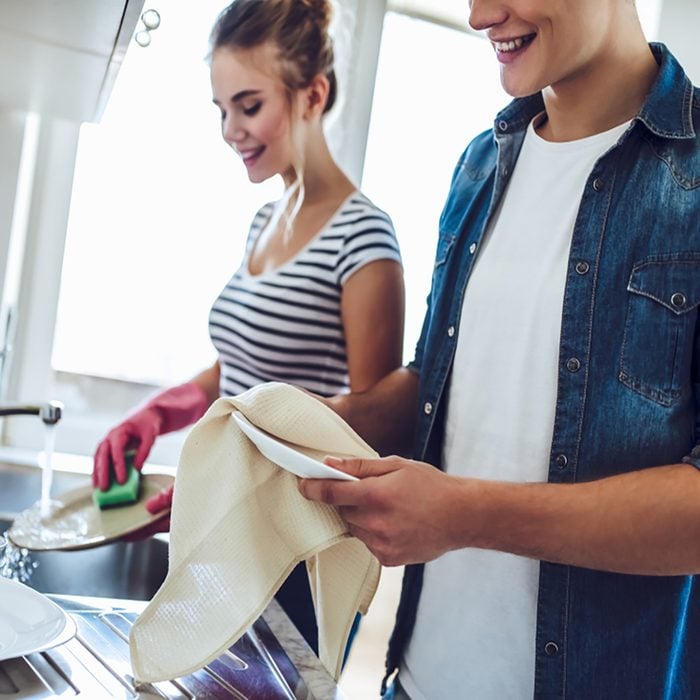
You had a long day at work, you cooked dinner for the whole family and now all you want to do is kick your feet up and relax… but you have to wash the dishes first. As one of the most dreaded tasks, we tend to rush through it and make some big mistakes. These mistakes can be relatively harmless but sometimes can cause germs to spread and can make your dishes dirtier! Read on to find out which dishwashing mistakes you’re making and how they can be fixed.
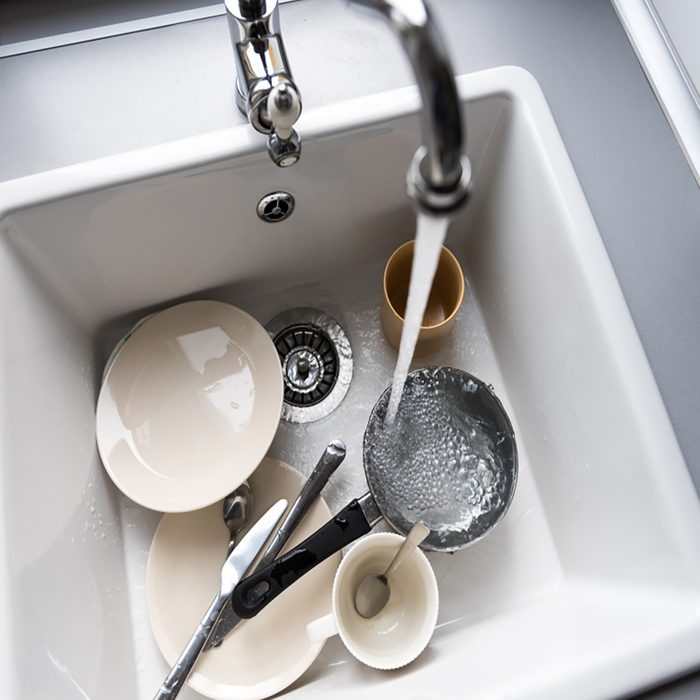
Letting dishes pile up
Leaving dishes in the sink for later isn’t just a lazy habit, it could also be a harmful one. Bacteria can stay alive for up to four days on your used dishes and spread through the kitchen. Not to mention that crusted on spaghetti sauce or oatmeal makes washing the dishes even more difficult. If you really don’t want to clean as you go, at least rinse and put in the dishwasher where any spare germs will be contained.
Learn how to deodorize your sink and drain using this handy citrus.
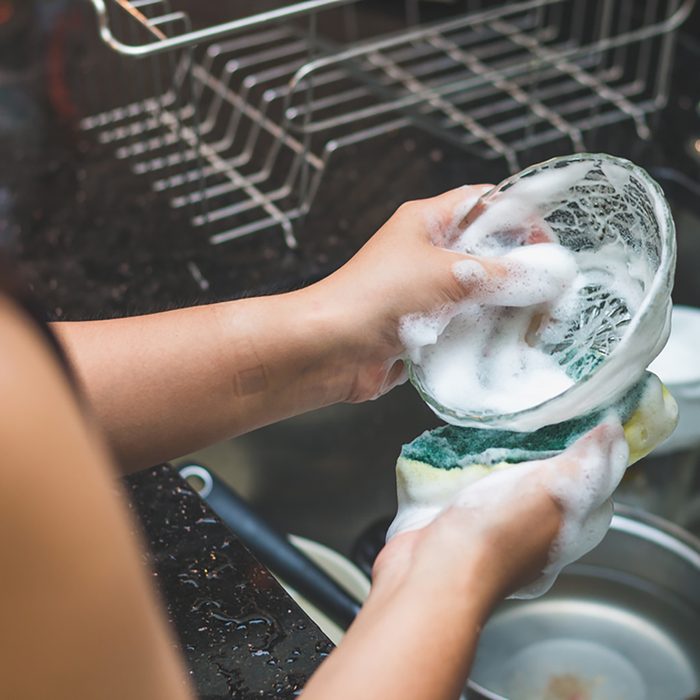
Using too much soap
Have you ever pulled a glass out of the cabinet and it looks cloudy and honestly a little dirty? You could be using too much detergent, as ironic as that sounds. Over-sudsing can leave a sticky residue on your dishes (and the taste of soap, yuck) so stick to a tablespoon or two of one of these safe soaps if you’re washing by hand.
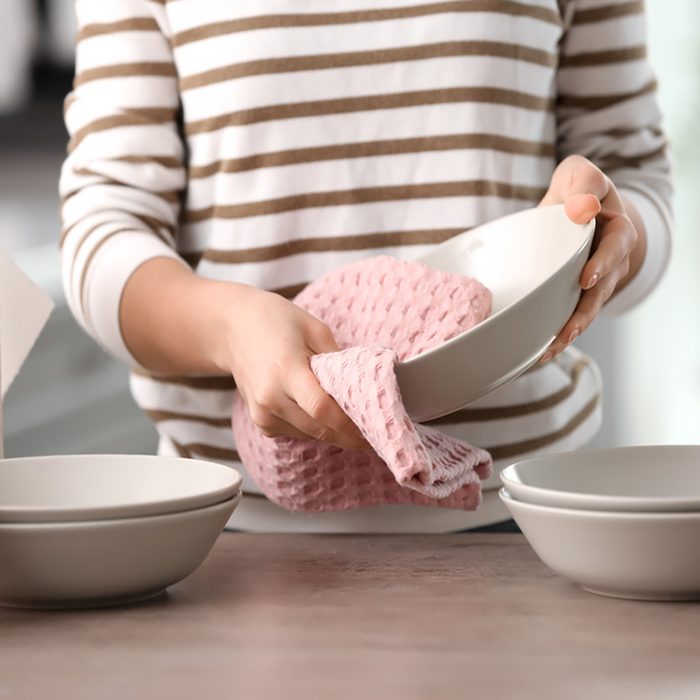
Drying with a dirty towel
That towel hanging by the sink that’s “just for dishes and hands” has probably become a catch-all for any spills or minor messes. Which means it’s laden with dirt, grime and even E. coli and other germs. While we don’t recommend using paper towels (bad for the environment), you can simply let your dishes air dry or be sure to swap out dish towels frequently.
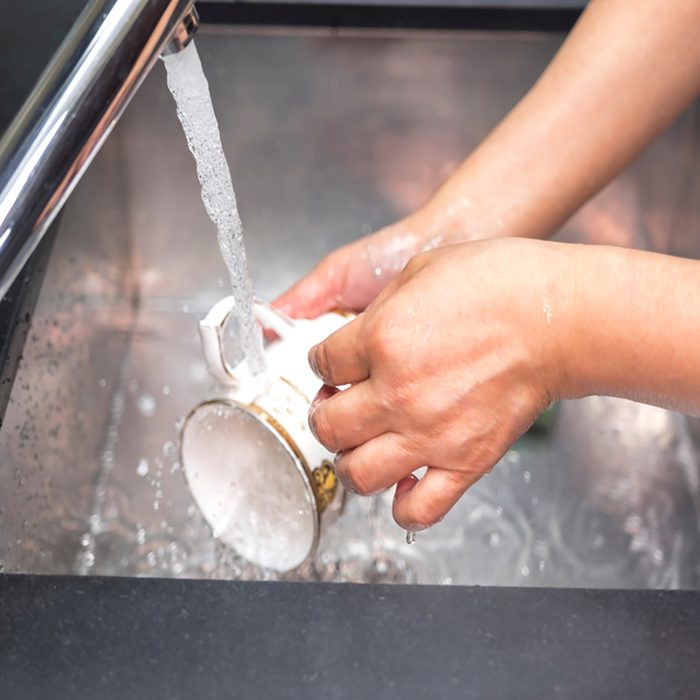
Washing with cold water
The perfect temperature to sterilize your dishes is about 120 to 140 degrees Fahrenheit, which is standard for most dishwashers. But your hands likely won’t be able to tolerate such a hot temperature. Using lukewarm water won’t kill the bacteria and could leave icky streaks on your dishes so wearing special dishwashing gloves can help.
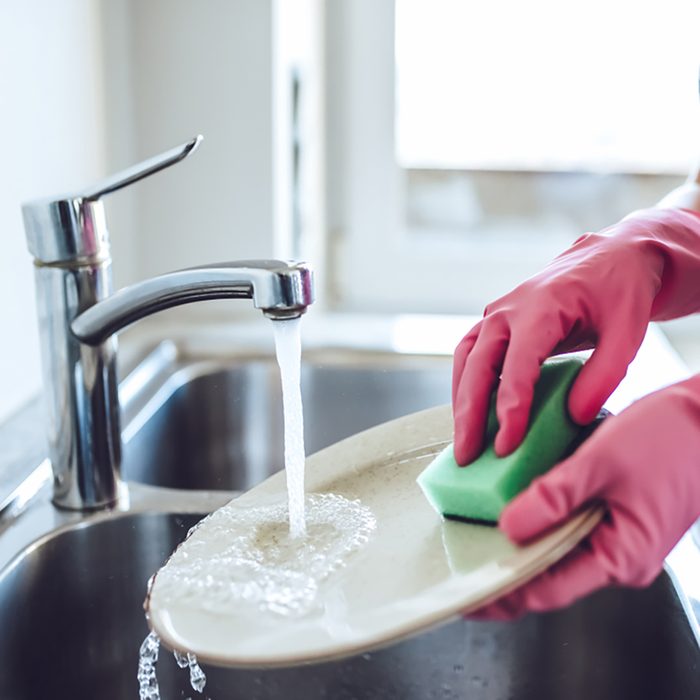
Scrubbing with a sponge
Kitchen sponges are havens for bacteria and germs. In fact, they may even be the dirtiest thing in your kitchen. So why would you clean with them?! Swap out your sponge for a dishwashing brush which can be cleaned and dried completely much easier. If you are set on the sponge, make sure to change it weekly and keep it clean between swaps with these tips.
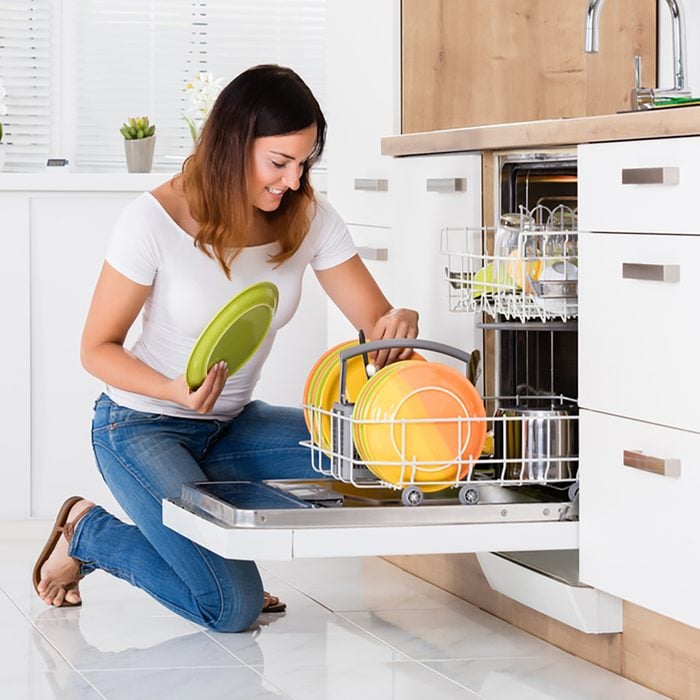
Forgetting to empty the food trap
Lift up the arm at the bottom of the dishwasher and you’ll find the food trap which is exactly what it sounds like. It collects any extra food particles that come off the dishes while they’re being washed. If you don’t empty it regularly (about once a week), it can get clogged and keep the dishwasher from running smoothly.
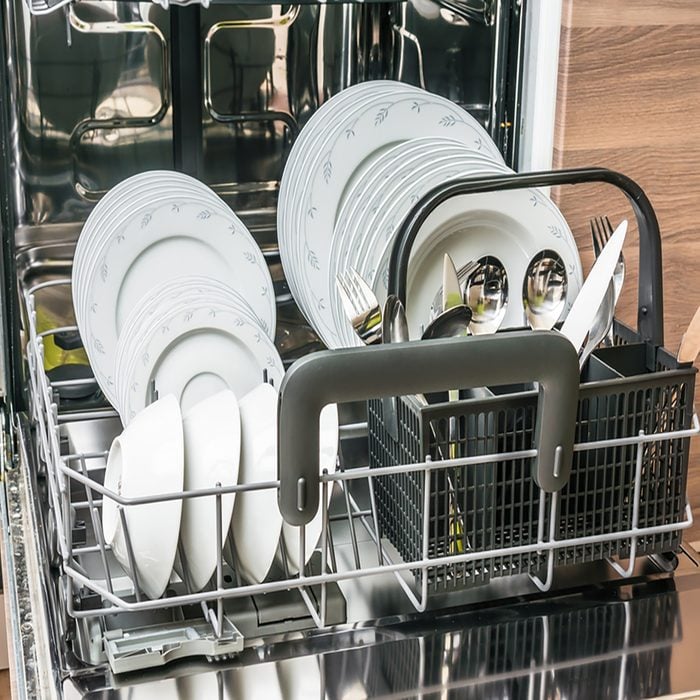
Not loading the dishwasher the right way
It seems efficient to put as much as you can in the dishwasher before running it. But cramming plates and cups and even silverware together doesn’t leave enough room for the water to get between and clean each one. And if you’re mixing and matching dishes on each shelf (like putting glasses on the bottom), you risk broken glass or a blocked sprayer. These tips will help you load everything the right way.
